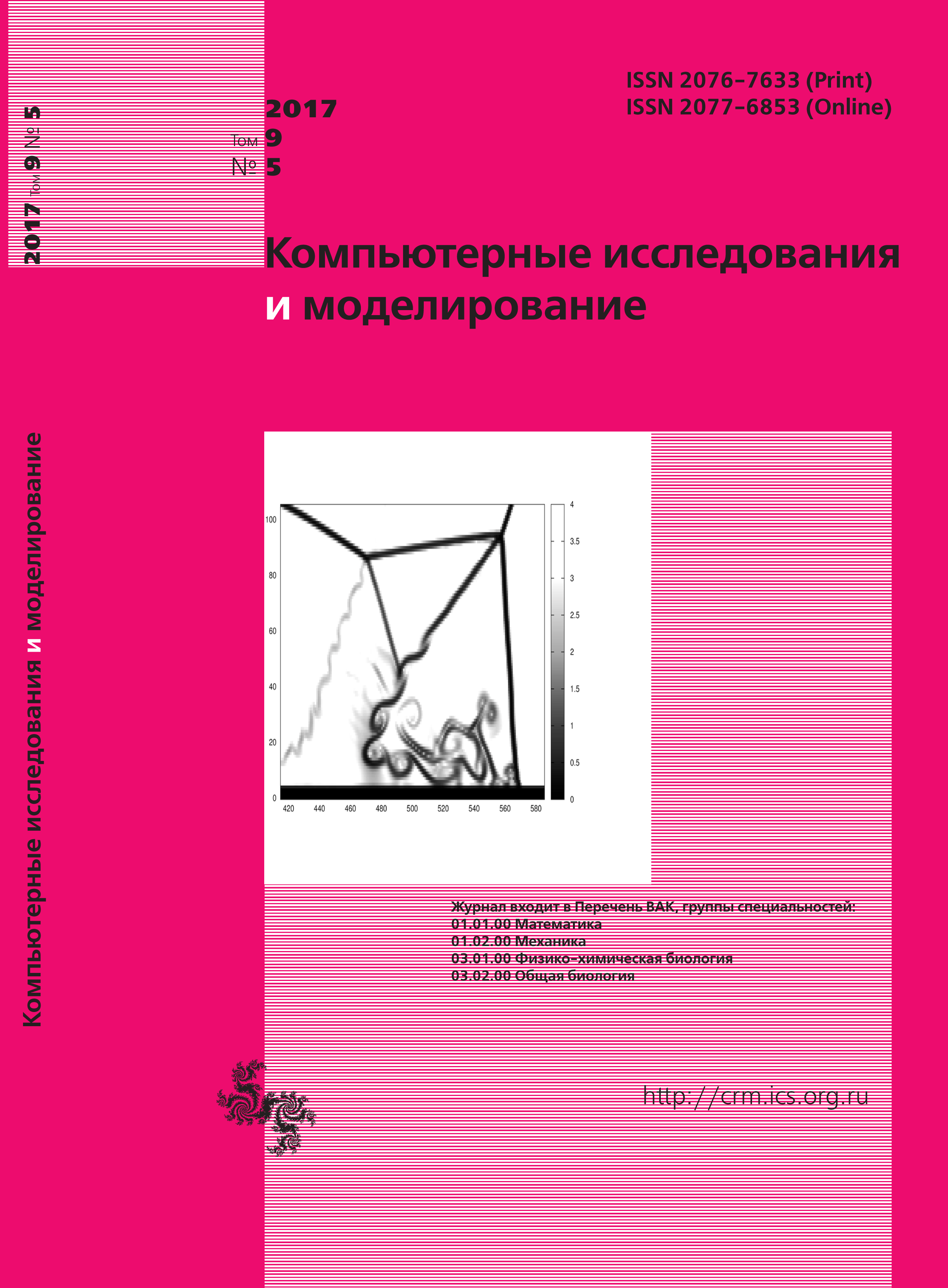All issues
- 2025 Vol. 17
- 2024 Vol. 16
- 2023 Vol. 15
- 2022 Vol. 14
- 2021 Vol. 13
- 2020 Vol. 12
- 2019 Vol. 11
- 2018 Vol. 10
- 2017 Vol. 9
- 2016 Vol. 8
- 2015 Vol. 7
- 2014 Vol. 6
- 2013 Vol. 5
- 2012 Vol. 4
- 2011 Vol. 3
- 2010 Vol. 2
- 2009 Vol. 1
Spatiotemporal dynamics and the principle of competitive exclusion in community
List of references:
- , , . Эффект аутостабилизации контролирующих рост факторов и взаимодействия в сообществе // ДАН. — 1987. — Т. 295, № 5. — С. 1236–1239.
- , , . Effekt autostabilizacii kontroliruyushchih rost faktorov i vzaimodeistviya v soobshchestve // Doklady Akademii nauk. — 1987. — V. 295, no. 5. — P. 1236–1239. — in Russian. — Math-Net: Mi eng/dan8014. — MathSciNet: MR0907182.
- , , . Автоволновые процессы. — М: Наука, 1987.
- , , . Avtovolnovye processy. — Moscow: Nauka, 1987. — in Russian.
- . Математическая теория борьбы за существование. — М: Наука, 1976.
- . Variations and fluctuations of the number of individuals in animal species living together. — New York: McGraw-Hill, 1926.
- . Matematicheskaya teoriya borby za sushchestvovanie. — Moscow: Nauka, 1976. — in Russian. — MathSciNet: MR0497841.
- . Смешанные проточные культуры микроорганизмов. — Новосибирск: Наука, Сибирское отделение, 1981. — С. 26–106.
- . Smeshannye protochnye kul’tury mikroorganizmov. — Novosibirsk: Nauka, Sibirskoe otdelenie, 1981. — P. 26–106. — in Russian.
- . Prey species replacement along a gradient of nutrition enrichment: a graphical approach // Ecology. — 1979. — V. 60. — P. 76–84. — DOI: 10.2307/1936470.
- , . Competitive exclusion // The American Naturalist. — 1980. — V. 115. — P. 151–170. — DOI: 10.1086/283553. — MathSciNet: MR0596657.
- . Coexistence of microbial populations and autostabilization of regulating factors in continuous culture: theory and experiments // Aquatic Ecology. — 2010. — V. 44. — P. 541–560. — DOI: 10.1007/s10452-010-9325-9.
- . The Struggle for Existence. — Baltimore: William and Wilkins, 1934.
- , , . Polytopic Lyapunov functions for persistence analysis of competing species // Discrete and Continuous Dynamical Systems. Series B 8 (1). — 2007. — P. 73–93. — MathSciNet: MR2300323. — zbMATH: Zbl 1129.92065.
- . Phytoplankton ecology: Structure, Function and Fluctuation. — London, 1986.
- , , . Species coexistence and self-organizing spatial dynamics // Hydrobiologia. — 1994. — V. 344. — P. 87–102.
- , . Consumer-resource theory predicts dynamic transitions between outcomes of interspecies interactions // Ecol. Lett. — 2009. — V. 12. — P. 1357–1366. — DOI: 10.1111/j.1461-0248.2009.01390.x.
- , , , . Reduced mixing generates oscillations and chaos in the oceanic deep chlorophyll maximum // Nature. — 2006. — V. 439. — P. 322–325. — DOI: 10.1038/nature04245.
- , . Biodiversity of plankton by species oscillation and chaos // Nature. — 1999. — V. 402. — P. 407–410. — DOI: 10.1038/46540.
- . The paradox of the plankton // The American Naturalist. — 1961. — V. 95, no. 882. — P. 137–145. — DOI: 10.1086/282171.
- , , . Biodiversity, habitat area, resource growth rate and interference competition // Bull. Math. Biol. — 2003. — V. 65. — P. 497–518. — DOI: 10.1016/S0092-8240(03)00008-9. — zbMATH: Zbl 1334.92349.
- , . A new hypothesis to explain the coexistence of n species in the presence of a single resource // C. R. Biologies. — 2006. — V. 329. — P. 40–46. — DOI: 10.1016/j.crvi.2005.10.004.
- , , . Quantification of the spatial aspect of chaotic dynamics in biological and chemical systems // Bulletin of Mathematical Biology. — 2003. — V. 65. — P. 425–446. — DOI: 10.1016/S0092-8240(03)00004-1. — zbMATH: Zbl 1334.92160.
- , , . Uni-directional consumer-resource theory characterizing transitions of interaction outcomes // Ecological Complexity. — 2011. — V. 8. — P. 249–257. — DOI: 10.1016/j.ecocom.2011.04.002. — MathSciNet: MR2975041.
Indexed in Scopus
Full-text version of the journal is also available on the web site of the scientific electronic library eLIBRARY.RU
The journal is included in the Russian Science Citation Index
The journal is included in the RSCI
International Interdisciplinary Conference "Mathematics. Computing. Education"
Copyright © 2009–2025 Institute of Computer Science






